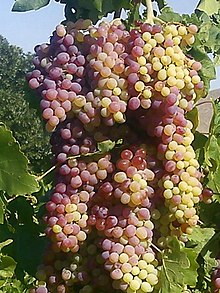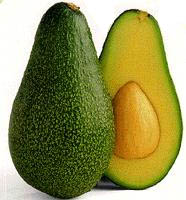If you know me at all, you will know that my eating habits are atrocious. I don't eat much or often, but what I do eat is terrible for me. However, after being called fat by two of my day campers last week at the pool, I have decided to go on a diet. And by 'go on a diet,' I actually mean 'skip lunch and look at fitness boards on Pinterest.' Well, things escalated from there, and I ended up reading about the history of fruits and vegetables.

Grapes were first cultivated in the Near East 6000-8000 years ago. Recently, archaeologists found evidence of wine-making (residue inside ceramic jars) in Georgia (the country) dating back 8000 years, which likely means that people began to eat and make wine with grapes before they were ever cultivated. Yeast grows naturally on the skin of grapes, meaning the first wine was likely made by accident. In addition to 8000-year-old Georgian wine residue, a winery from around 4000 BC has been found in Armenia. Persia, particularly the city of Shiraz, has been known for its wine since antiquity. Ancient Egyptians, Greeks, Phoenicians, and Romans all grew grapes for eating and for drinking.
The word grape comes from the Old High German word krapfo, meaning hook. It is derived from the hooked tool used to harvest grapes.
A raisin refers to any dried grape. Raisin dates to around 1300, and is derived from the Vulgar Latin word for a bunch of grapes, racemus. That, in turn, likely derives from the same long lost Mediterranean language that gave the Greeks their word for grape or berry, rhax.
A currant technically refers only to a dried Zante Black Corinth grape. It's a corruption of the French phrase raisin de Corinthe. I have somehow made it through twenty-one years of life without ever knowing what the heck a currant actually was. Now I know. It's just an uppity raisin.
A sultana is a raisin made from a Turkish Sultana grape, technically. Now it just refers to a raisin made from any white grape (or a red grape that's been bleached).

Apple trees were possibly the first tree ever cultivated, and originated in the Near East. They are perhaps better known for being, according to Judeo-Christian folklore, the fruit that screwed humanity. The first apple trees in the Americas were planted in Boston in 1625.
Apples hold a symbolic meaning for many cultures. They were seen as symbols of fertility and youthfulness in Norse and Germanic paganism. To the Greeks, apples were seen as a provocation (throwing apples of discord) or as a declaration of love. And, of course, the infamous apple in the Garden of Eden.
However, there is a problem with all this symbolism. Right up through the 17th century, the word apple was used interchangeably with the word fruit. Sort of like saying There's a bug in my room, when you really mean There's a cockroach in my room. Or if you're Southern, Can I have a Coke? when you really mean Can I have a carbonated beverage?
One possible reason for this fruit ambiguity takes us back to the Latin. The Latin words for apple and evil are both malum, but with different accent marks over the a.
Our word apple comes from the Old English aeppel, which ultimately derives from the Proto Indo-European word abl.
I don't dislike apples by any stretch of the imagination, but if I were going to ruin my life and damn my species for a piece of fruit, it would be a peach. Maybe pineapple.

The apricot's scientific name is translated as the Armenian Plum. It's been around in Armenia, like, forever, and was almost certainly cultivated there originally. Scientists have found apricot pits at sites dating to the European Copper Age (7000 years ago).
Alexander the Great introduced apricots to Greece in the 4th century BC, and the Romans, Egyptians, and Persians all a soft spot for the slimy little fruit.
The word comes to us from the Catalan abercoc, which itself is derived from the Portuguese, which came from Arabic, which came from Byzantine Greek, which came from the Latin malum praecoquum, which means early-ripening fruit. Romans believed apricots were peaches that ripened early.
Now that I think about it, I'm not 100% certain I remember what an apricot tastes like. I think it's one of those fruits that I think I like, and then I try one, and realize why I don't eat them very often. The texture sort of weirds me out.

I'm going to be straight with y'all. I have never tried avocado. However, I'm pretty certain I don't like it. I don't know, it's something about how the color, texture, and appearance come together and make it look vaguely extraterrestrial.
As you probably guessed, the avocado is Latin American in origin. It likely originated in the Puebla, Mexico area. The undomesticated variety is called a criollo. The oldest evidence of humans using avocado comes from a cave in Coxatlan, Mexico, that was inhabited 12000 years ago. Avocado-shaped pots have turned up in 10th century pre-Inca sites. (However, I defy you to make a functional pot not shaped at least vaguely like an avocado.)
The fruit was known in Europe by 1518, and was part of the English lexicon by 1698. It comes from the Spanish word aguacate, which comes from the Nahuatl word ahuacatl, which itself comes from the proto-Aztecan word *pa:wa. [Full disclosure, I haven't a clue how that's actually pronounced.]
In South America, the word for avocado is palta, which is much closer to the original proto-Aztecan/Quechua form. Also, the word guacamole derives from the Nahuatl words ahuacatl and molle, meaning sauce.
Westerners began pronouncing it avocado, because we got it mixed up with the word abogado, Spanish for lawyer.
Oh, I forgot the best part. The original Nahuatl word, ahuacatl, means testicle.
Now I feel totally justified for refusing to try avocado all my life. How very Freudian of me.
Eat your fruits and vegetables,
Callie R.
No comments:
Post a Comment